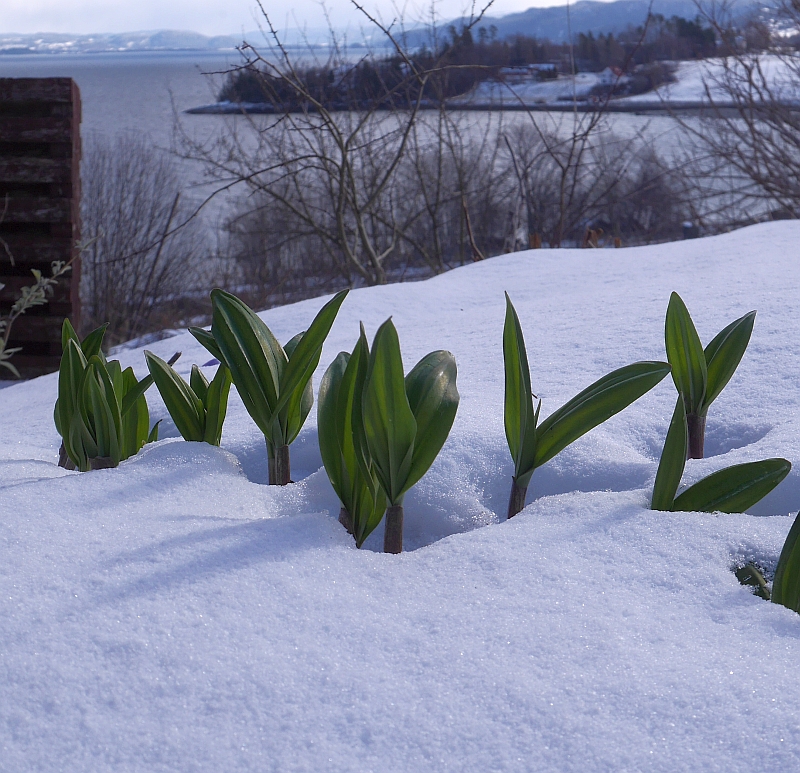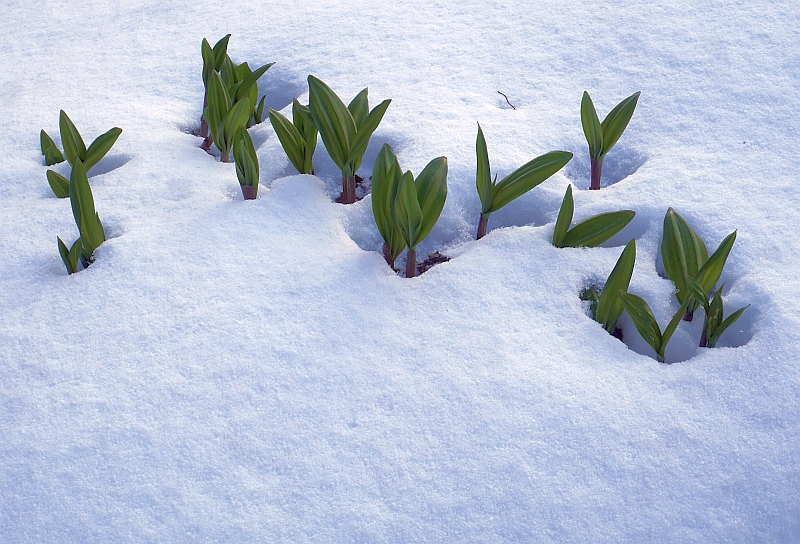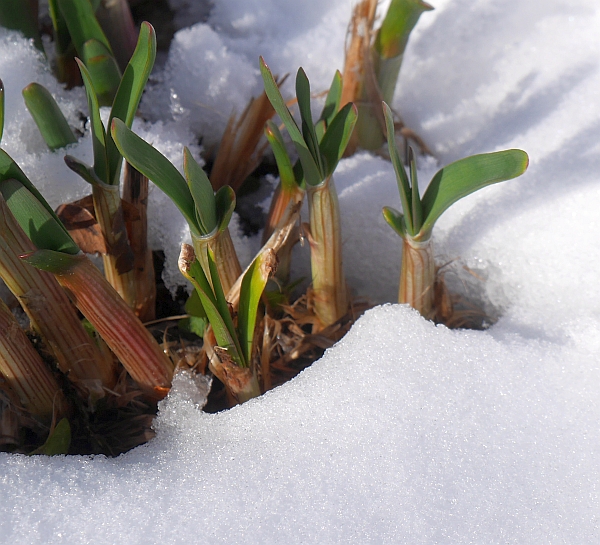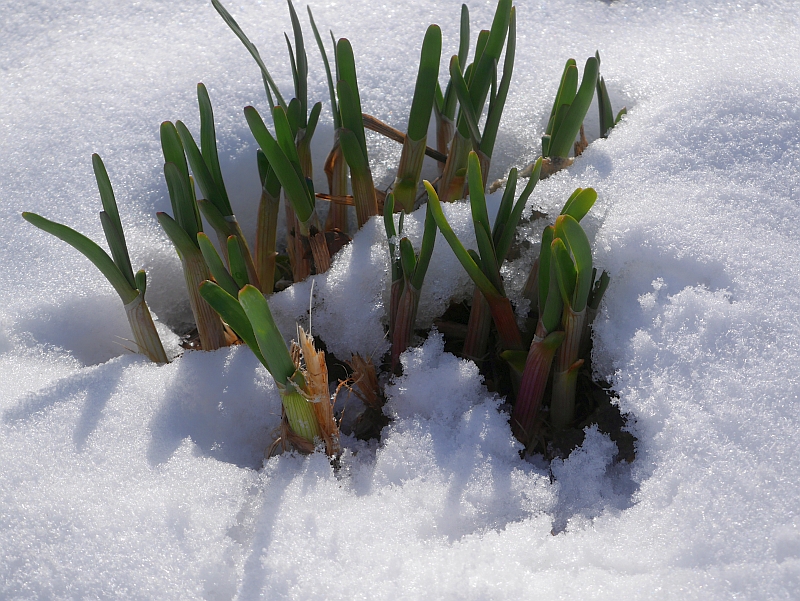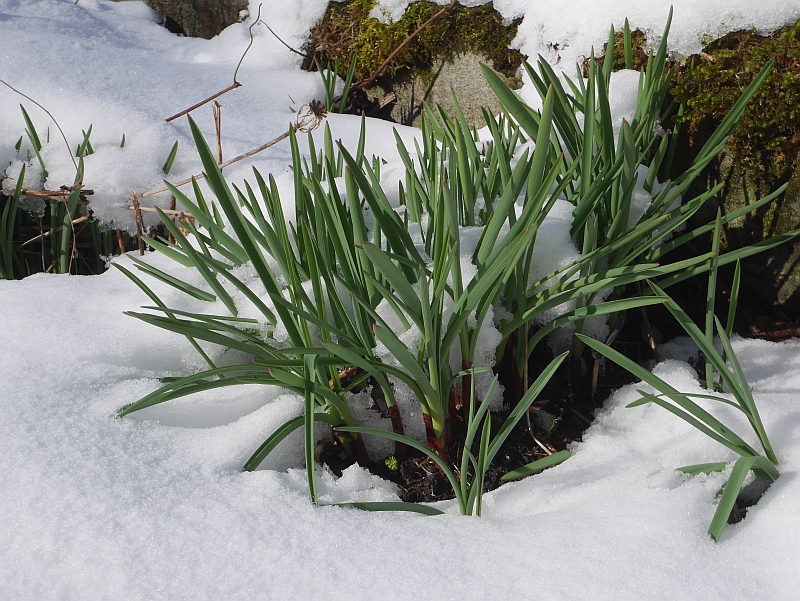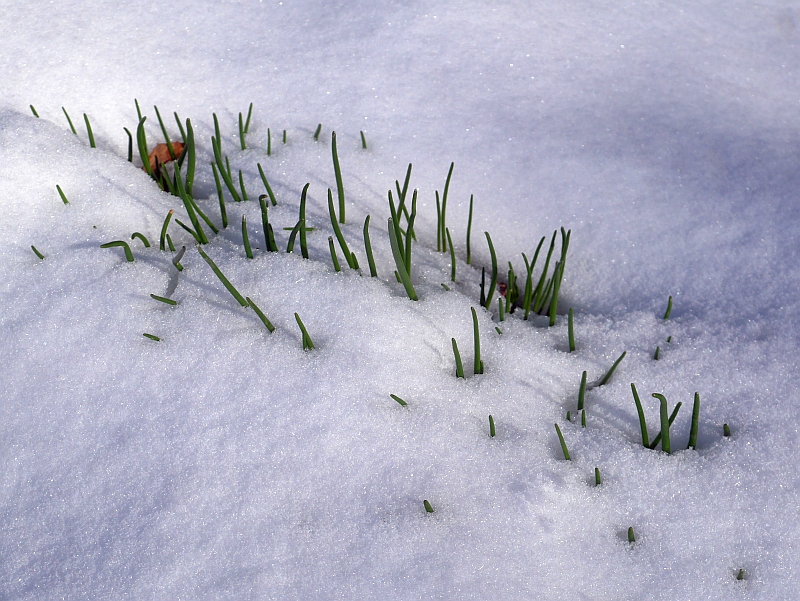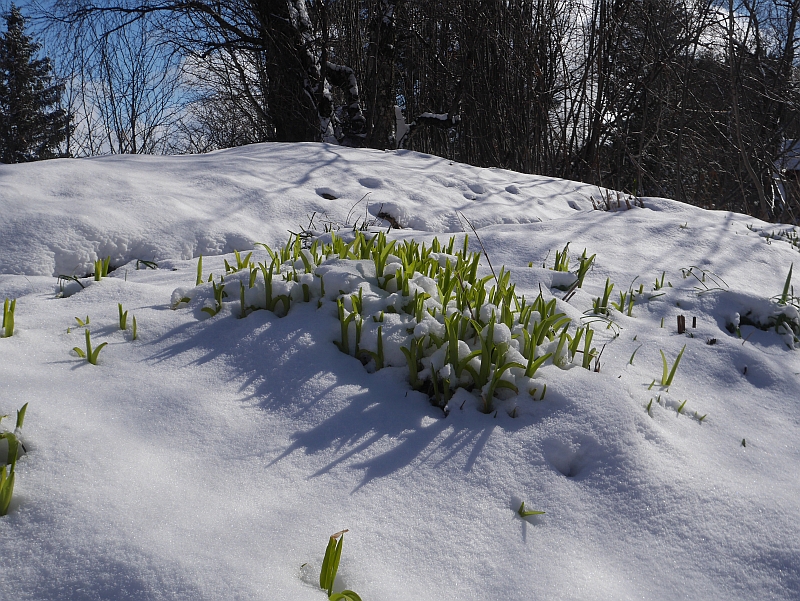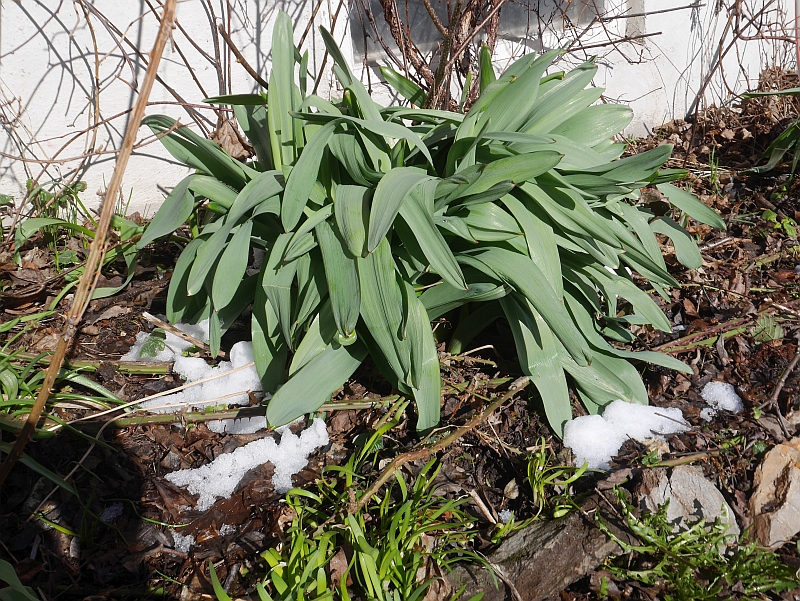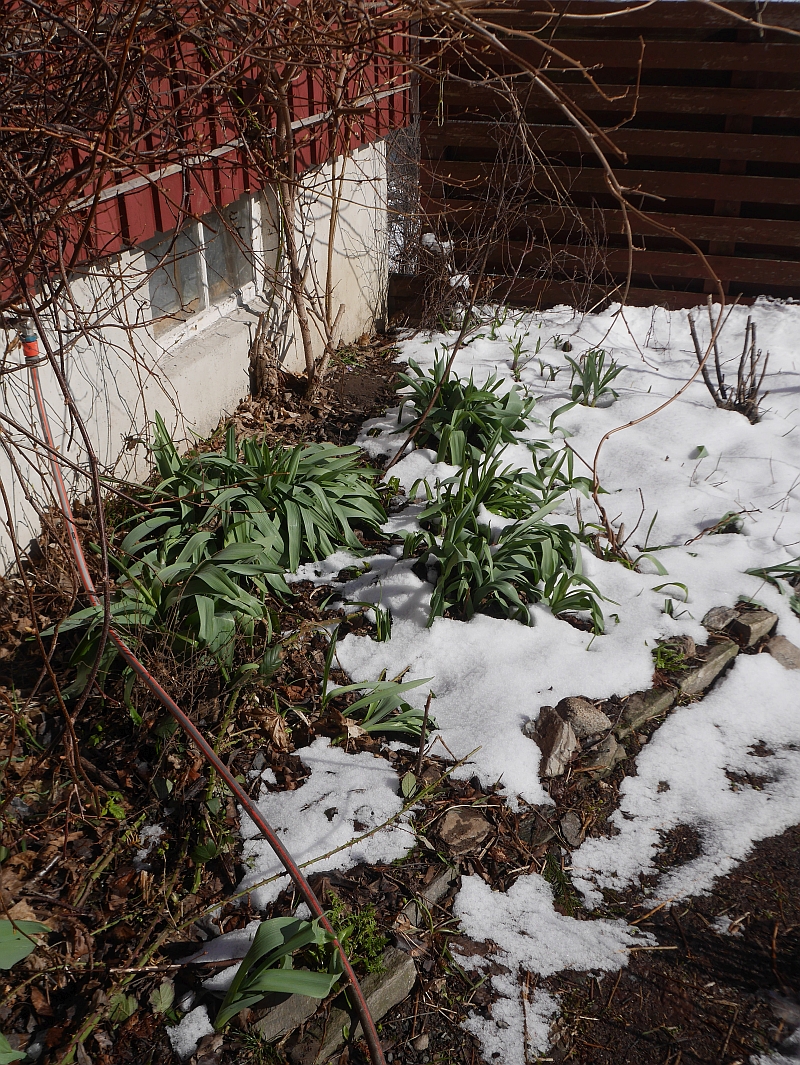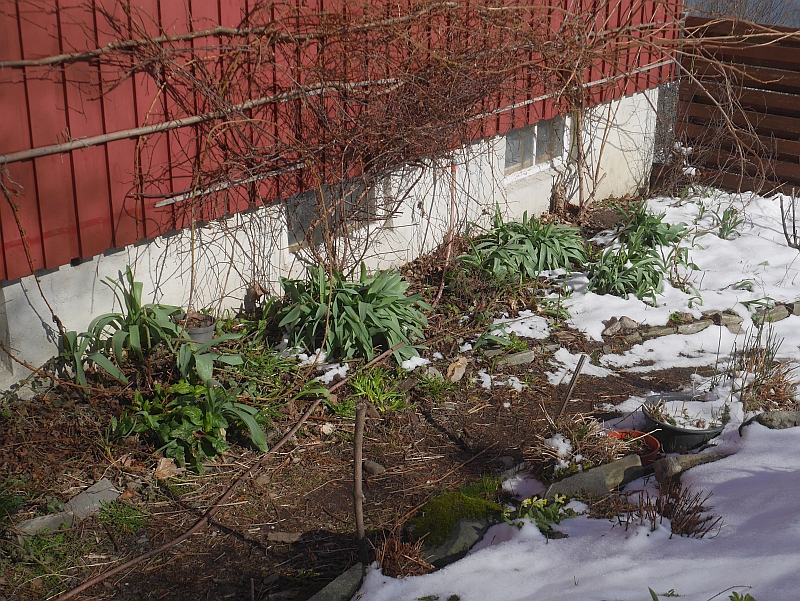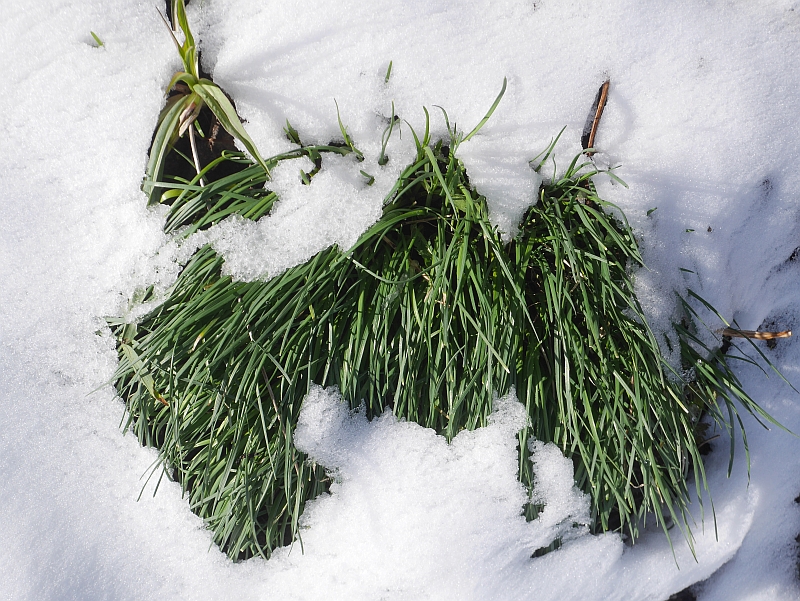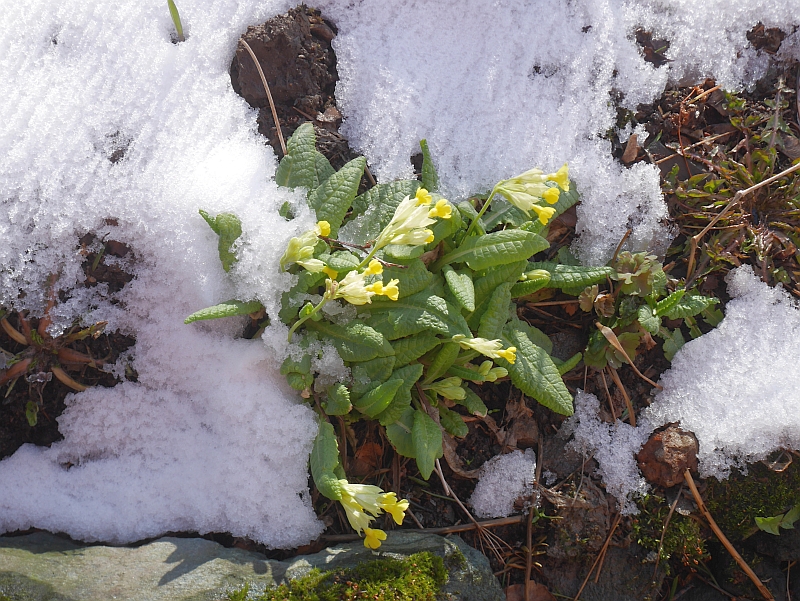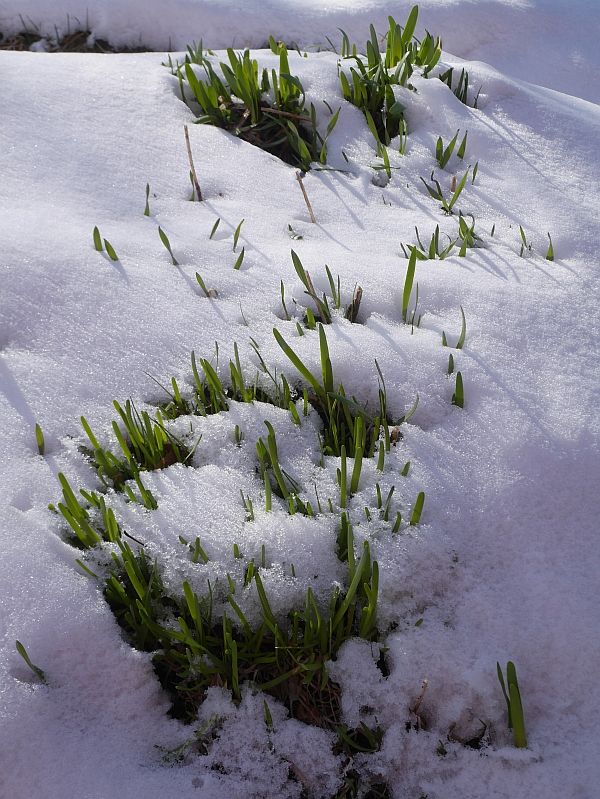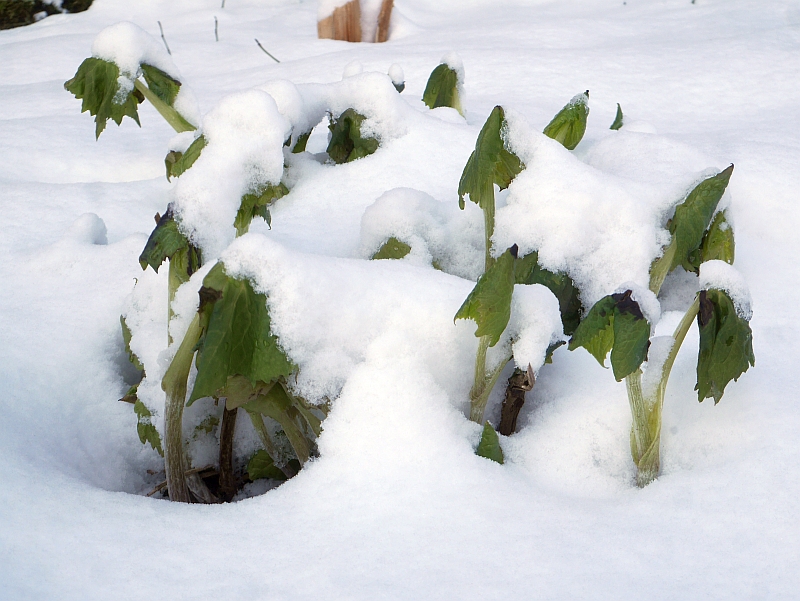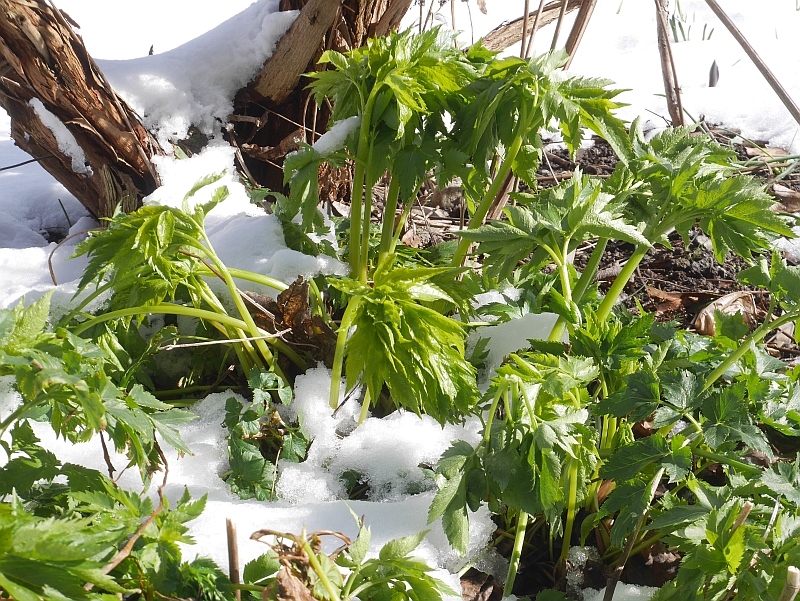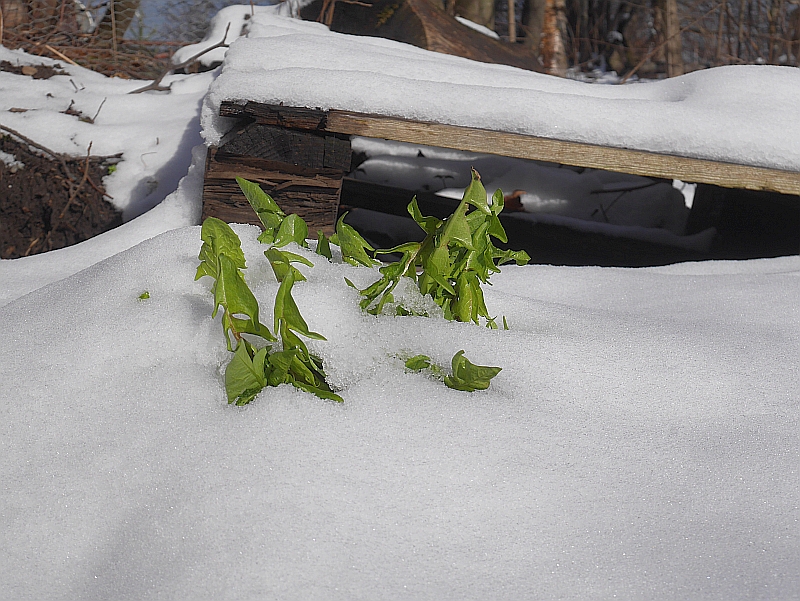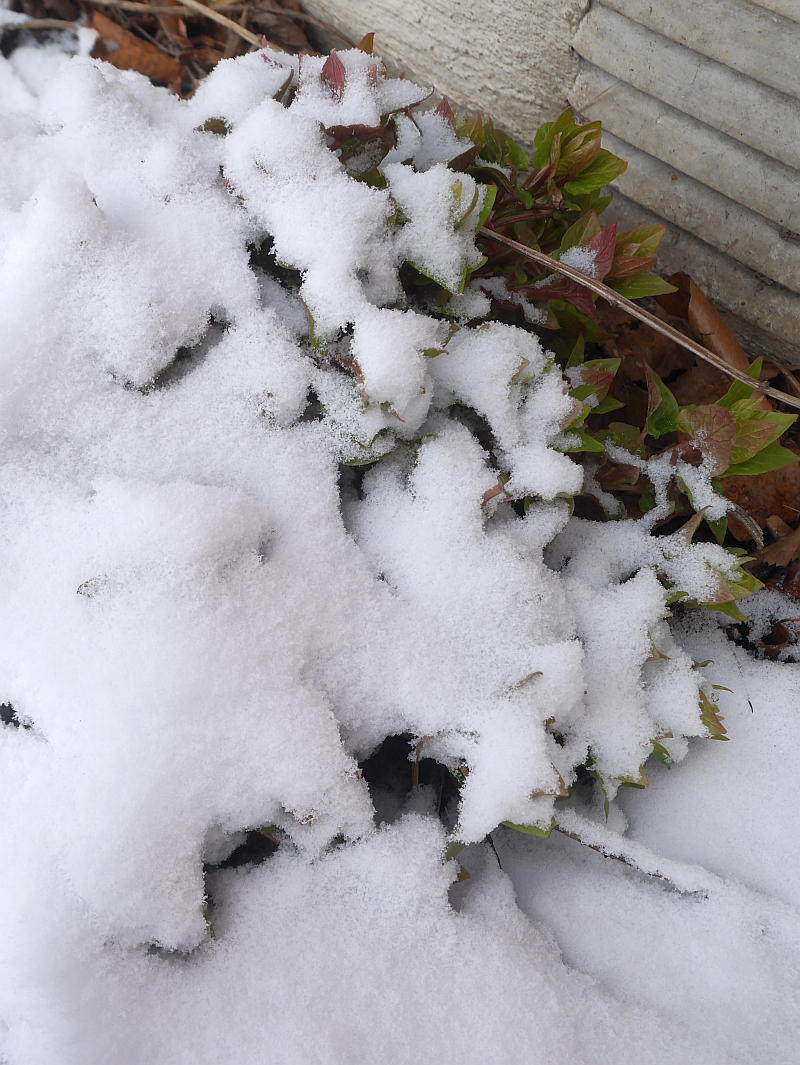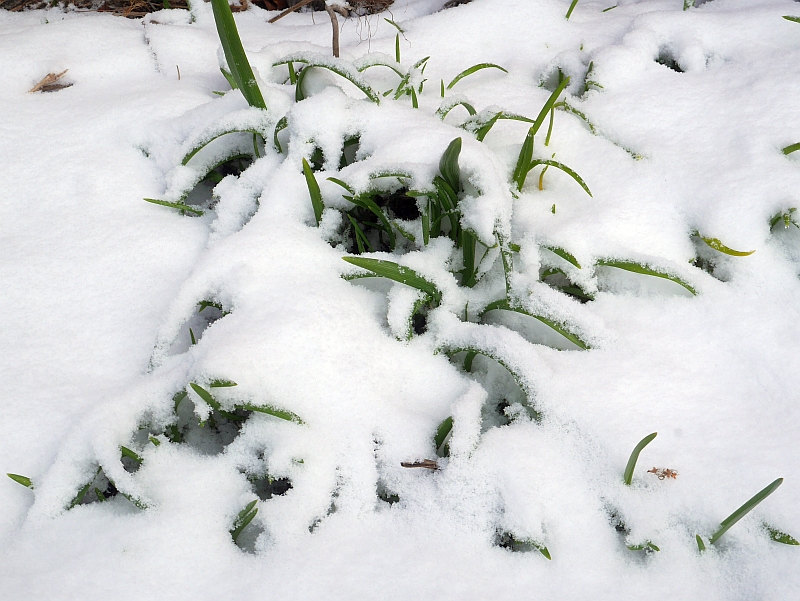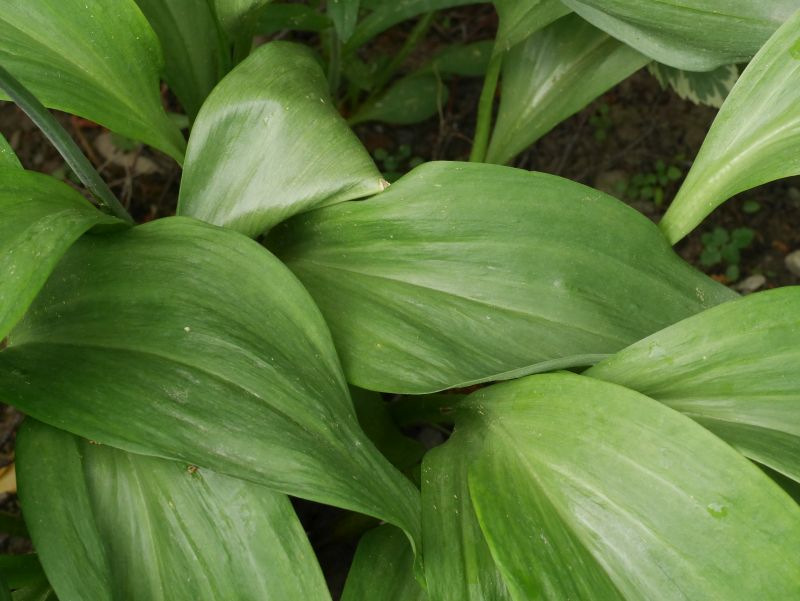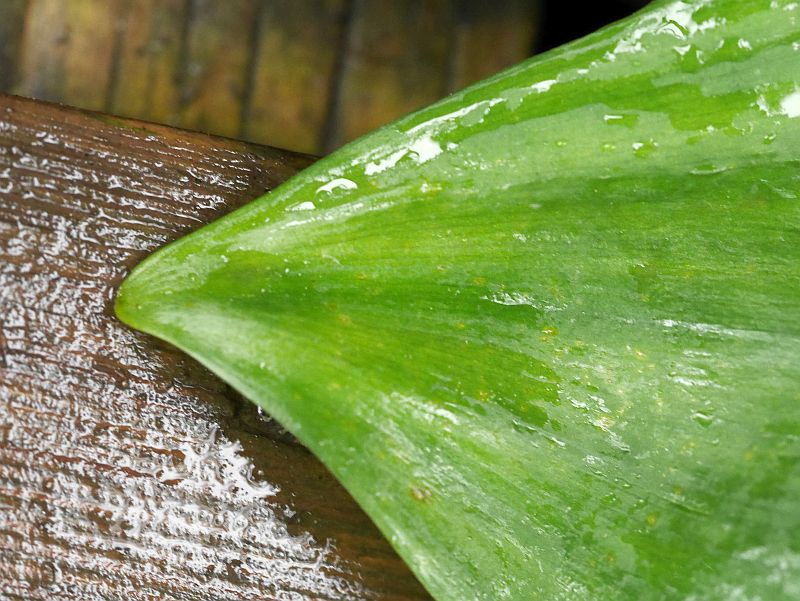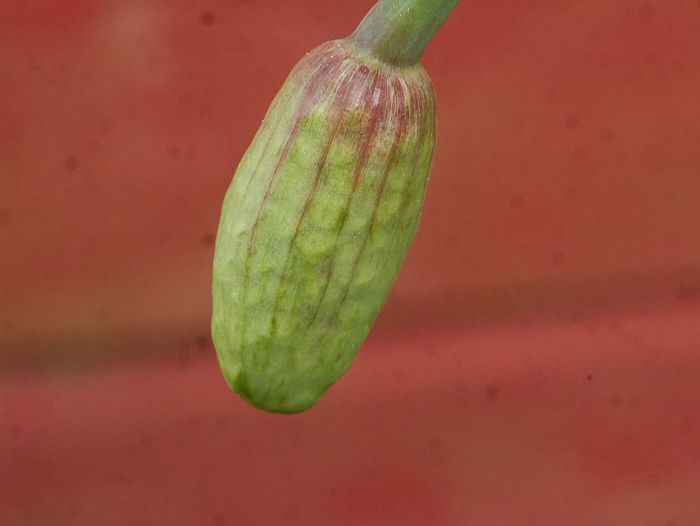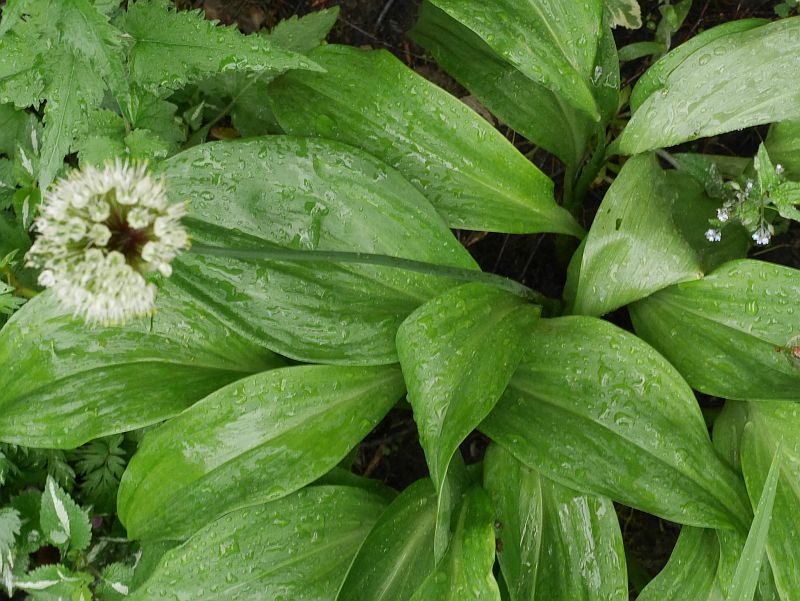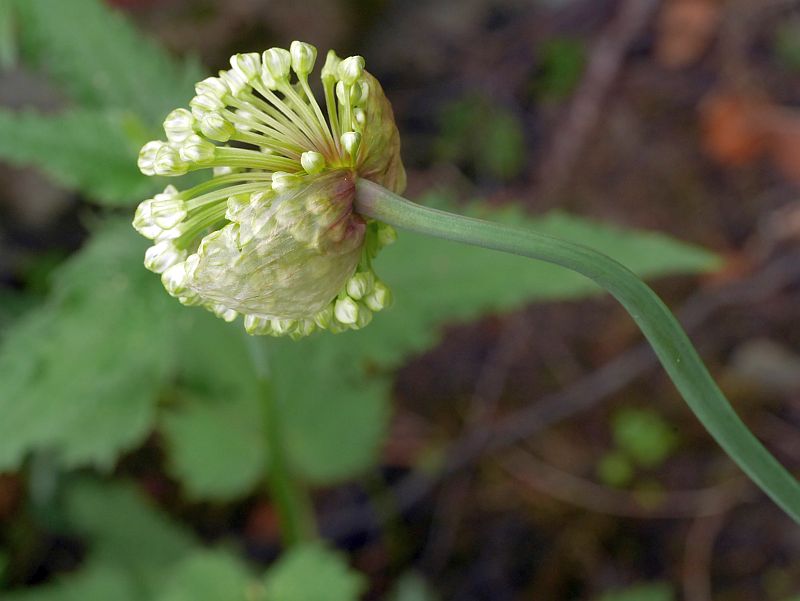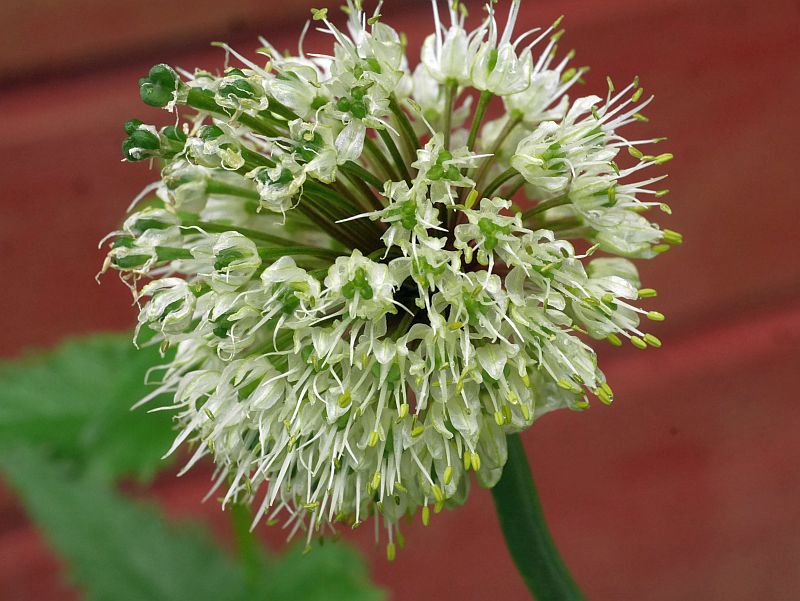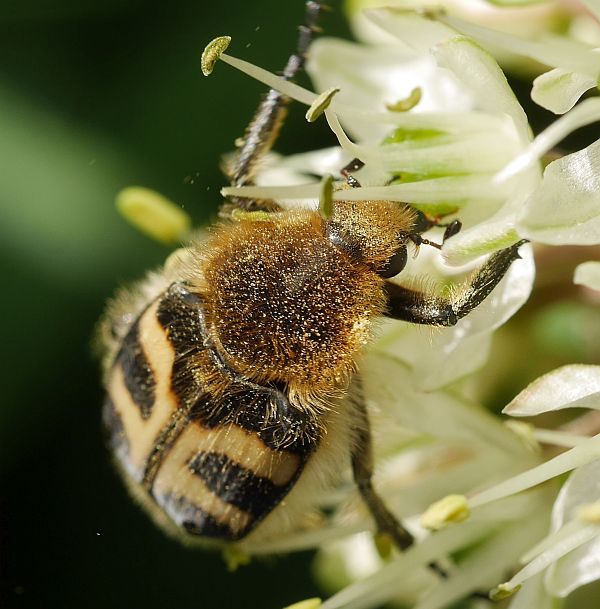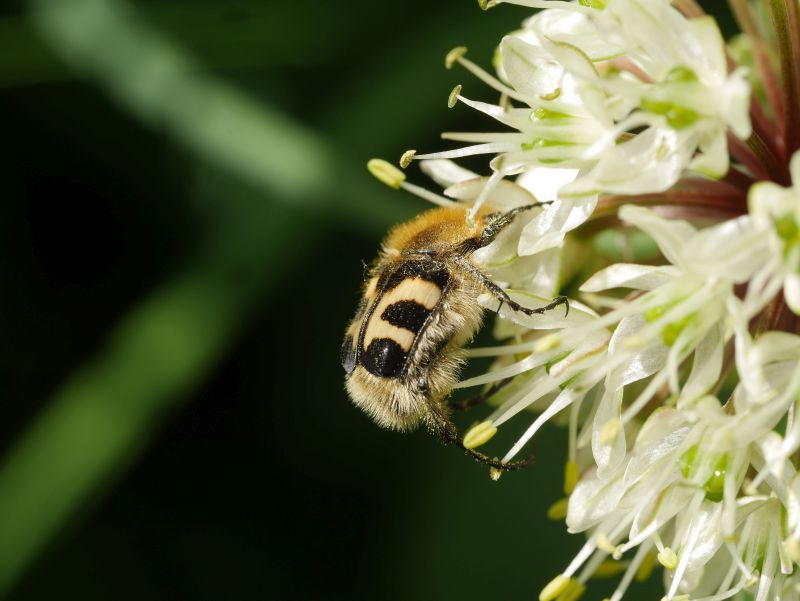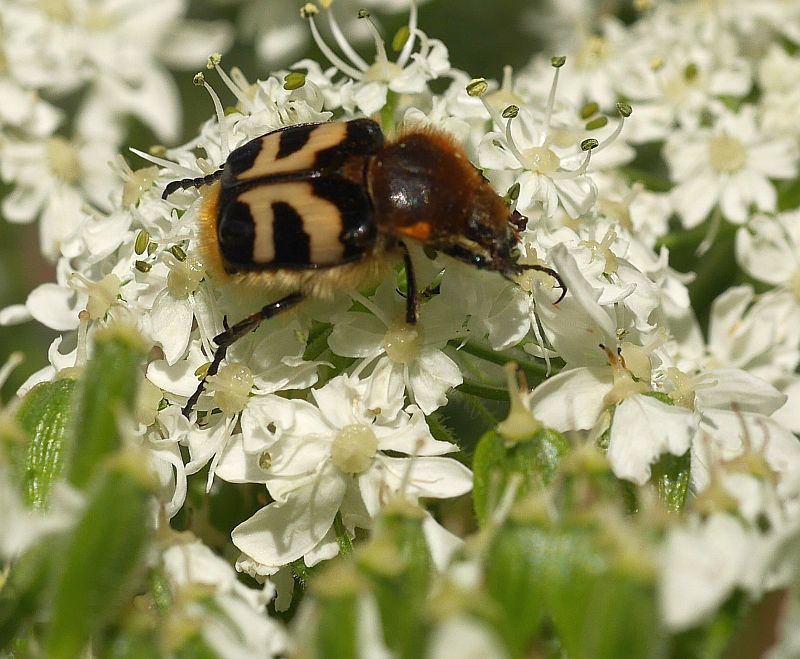

Various Allium species are the hardiest of edible plants either staying green all winter (e.g., Allium cernuum and Allium carinatum) or sprouting very early and able to withstand some frost. With a minimum forecast of -6C tomorrow after a very mild March, it will be interesting to see whether any of these early shooters are damaged. Here are a selection of pictures of Alliums and other early spring shoots in this weeks snow.
Tag Archives: Allium ochotense
Allium ulleungense: a new vigorous edimental
In 2019, a very interesting paper was published giving a very good case for splitting the geographically widespread Allium victorialis species complex, at the same time describing a new endemic species to the island Ulleung between Korea and Japan. The paper also mentions that the species is “Rare in natural habitats, but widely cultivated in Korea as an edible plant named ‘Myeong-i-na-mul’ or ‘Sanmaneul.’”
Reference: “Allium ulleungense (Amaryllidaceae), a new species endemic to Ulleungdo Island, Korea” by Hyeok-Jae Choi, Sungyu Yang, Jong-Cheol Yang and Nikolai Friesen in the Korean Journal of Plant Taxonomy
Those who follow my blog and FB posts will maybe remember my article on the Giant Ulleung Celery, Dystaenia takesimana, another edible endemic to this island which I’m growing in my garden from two sources, one of which is the Gothenburg Botanical Gardens in Sweden (see http://www.edimentals.com/blog/?p=24998)
Figure 4 in the paper (below) shows a map of Allium subg. Anguinum showing the disjunct distribution of what was earlier classified as Allium victorialis, now split into Allium victorialis, microdictyon, ochotense and the new species Allium ulleungense together with other species in the section like Allium ovalifolium.
The article has a useful table and pictures showing the differences between microdictyon, ochotense and ulleungense.
I have about 10 different “Allium victorialis” accessions in my garden both from Norway, Kola (Russia), the Alps and the Far East. Having read the paper which documents that the Ulleung victory onion has both broader and longer leaves I noticed that one of my plants had very different and broader leaves than my other ones and was particularly vigorous. I had lost the label of this plant. Johan Nilson of the Gothenburg Botanical Garden wrote on the Alliorum forum thread about this species: “I believe we might grow this” (they had had an expedition to the island some years ago and this onion and Dystaenia had been collected). Johan had given me various edibles on a visit to Gothenburg a few years ago and I wonder if he might have given me this plant?
Anyway, the morphology of this plant fits well to the newly described species with several leaves 12 cm wide (ochotense reaches 10 cm and microdictyon 6 cm); leaves up to 26-27 cm long (the other two species reach 25 and 21.5cm) and yesterday I measured the white tepals which are slightly longer in the new species and this also matched with 7mm length (the others reaching 6.5). The rounded leaf apex of my plant also matches ulleungdense, acute in the other two species (and other Japanese accessions I have in my garden). I now need to propagate it and plant it in the Allium garden Chicago at the Ringve Botanical Garden.
Bee beetle
One of my favourite insects is the bee beetle / humlebille (Trichius fasciatus). This morning I saw it on one of my favourite onions victory onion / seiersløk (this one is Allium ochotense; the East Asian species – recently separated out as a species). Later I filmed it also on a hogweed (Heracleum spp.).
Earliness and diversity in Victory Onion
Victory onion or seiersløk (Allium victorialis) in Norwegian has one of the most widespread geographic distributions in the Allium genus from the Pyrenees to the Far East. In Norway, it’s naturalised in the Lofoten Islands, a few places in Nordland county and one location in Hardanger (Granvin). There is evidence to believe that it was originally introduced to Norway by the Vikings. I have plants from different parts of its range in my garden and there is a large difference between them as to when they begin to shoot in the spring, the ones deriving from Japan leafing out a few weeks earlier than the ones from Europe and Norway, although a plant received as Allium ochotense (nowadays considered by most as a synonym of A. victorialis), which originated in the Tromsø botanical garden, is probably from the Russian Far East and is also a late variety. Below are pictures of most of my plants taken on 19th and 20th April 2020. I have about 5 other accessions, two not big enough to photograph, one from the Kola peninsular has not grown well and will be moved to a new location, 3 more were planted this spring. two donated by the Oslo botanical garden and one a variegated form from Japan: Allium victorialis subsp. platyphyllum ‘Chiri Fu’.
1) From a seed trade with Iku Kubota in Japan in 2002.
2) From Tei Kobayashi in Japan in 2016 (subsp. platyphyllum or broad-leaved victory onion) has a flower bud extending
3) From seed from the Reykjavik botanical garden in 2009, originatin from the Sakhalin in the Russian Far East. This one also has a flower bud and has broadish leaves.
4) Received from the Tromsø botanical garden in 2002
5) From Granvin in Norway in 2012
6) From Merete in Lofoten in 2003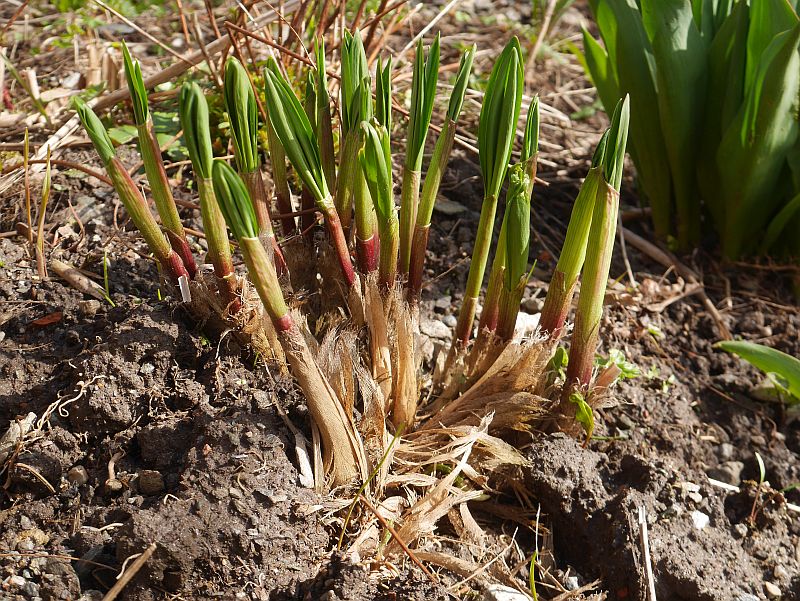
7) From Anja Angelsen. Krogtoft, Vestvågøy, Lofoten, Norway (2009)
8) From Massif Central in the French Alps (kindly sent to me by the Haut-Chitelet alpine garden in 2013) 
9) From naturalised plants in Hopen, Nordland, Norway in 2013 10) Probably Allium victorialis Cantabrica AMH 7827 (collected by Antoine Michael Hoog, the son of one of the founders from Van Tubergen); I received it as Cantabria in 2008.
10) Probably Allium victorialis Cantabrica AMH 7827 (collected by Antoine Michael Hoog, the son of one of the founders from Van Tubergen); I received it as Cantabria in 2008.

